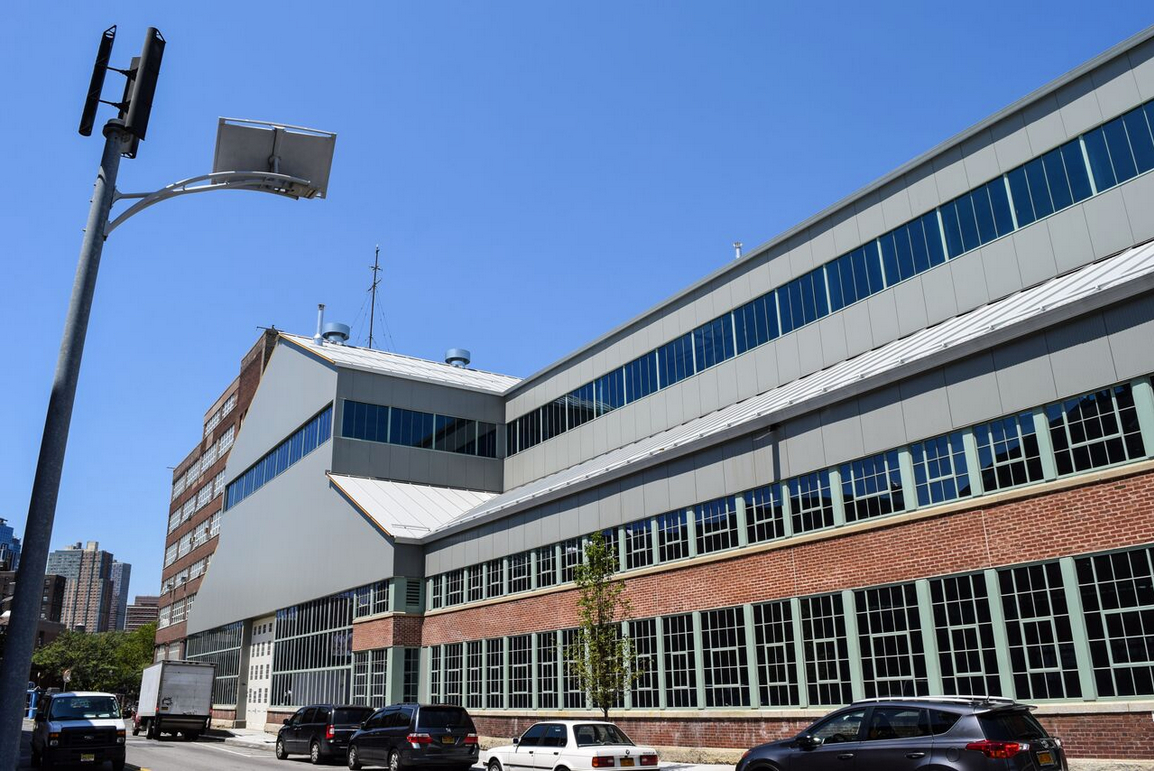RoboArm vs Roboquin at Brooklyn’s Mechatronics Competition
Engineering students battle it out at Brooklyn Navy Yard’s New Lab

Christian Jean-Simon, Anisha Cartagena and Lev Gurvits demonstrated their Feedback Controlled RoboArm, in which a robot arm mimicked the movements of its sister arm. The project took first place. Eagle photo by Mary Frost
It was Feedback Controlled RoboArm vs Roboquin at the Mechatronics Competition at the Brooklyn Navy Yard on Monday.
On one table a smart prosthetic arm opened and closed its hand on command, while at the next, a fashion-forward robot waved its arms and answered retail customer-type questions. Across the way, students demonstrated a jet-powered vehicle put together from parts made with a 3-D printer. On the floor, a luggage-delivering robot scooted around carrying a backpack.
Design and engineering students from CUNY City Tech put high-tech projects through their robotic paces before a panel of judges at New Lab, a center for cutting-edge tech in a former ship-building space at the Navy Yard.
